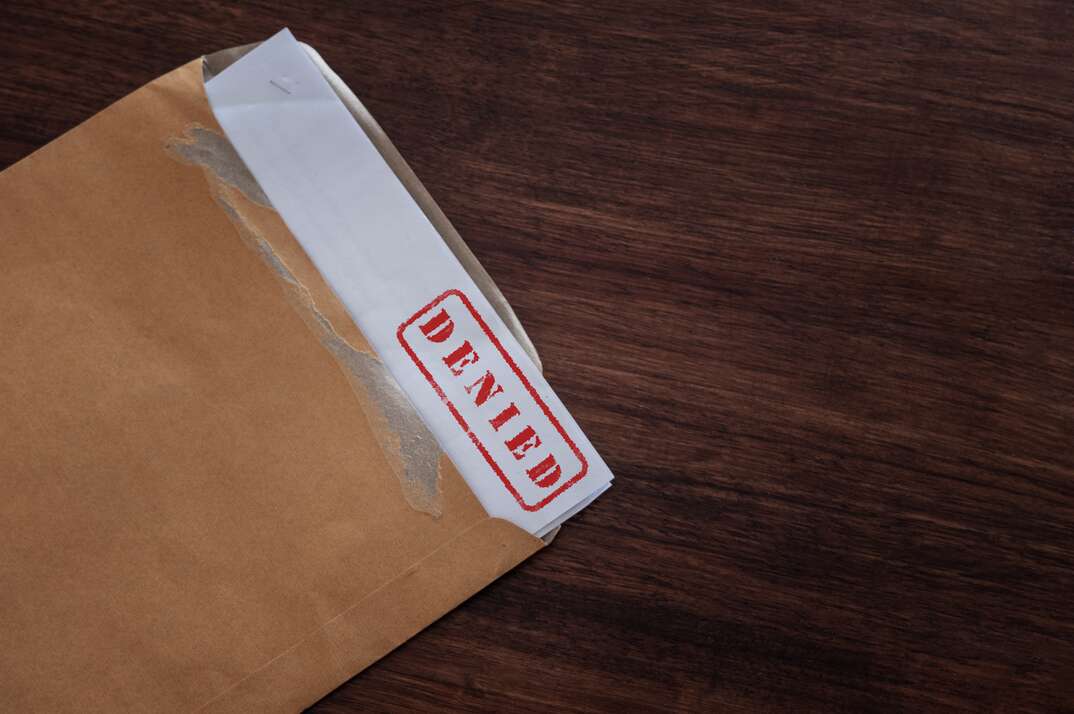Why Was My Patent Application Denied?

Submitting a patent application is a big step in bringing your ideas to life. It ensures no one else can manufacture or profit from your invention without your permission.
However, it's not as easy to get a patent as many people think. Knowing the common reasons patent applications may be denied can help you protect your work if your patent application isn't approved.
Common Reasons Patent Applications Are Denied
Patent application approval rates vary by year, but on average, 40% of applications are denied each year. Patents are commonly denied for reasons such as:
Lack of Novelty
A patent can only be approved if it's considered a new design, process or plant species. If someone else has already patented the idea or is using it, your patent application will be denied. It's also possible for an application to be denied if you went public with the idea before applying for a patent.
Insufficient Disclosure
Your patent application must include enough information for someone to create and use the design without any other informational materials. A vague patent application is likely to be denied.
Obvious Design
Inventions or designs that are too obvious may not be considered patentable.
Design Isn't Patentable
There are restrictions on what can be patented in the United States, and your idea must fit within one of the three patent categories: utility, design or plant. Anything else, such as an abstract idea, will be rejected.
Not Responding to Requests
The patent office may follow up with you after your application to get more information. Failing to respond to this request in a timely manner could result in the patent being denied.
Denied patent applications aren't eligible for a straight reapplication, but there's a process called continuation application, which is a similar concept. A continuation application allows you to provide new claims and evidence regarding the specific areas that resulted in the original patent being rejected. For example, if the original patent was rejected for not having sufficient design information, you could file a continuation application to provide a more detailed schematic. A continuation application requires a separate application fee.
- When Do You Need a Lawyer? Determine If You Need to Hire an Attorney
- How Much Are Court Costs?
- What Is a Misdemeanor?
- What Is Legal Precedent?
- How Do You Fire Your Attorney?
Can I Make an Appeal?
It is possible to appeal a rejected patent application, but unless there was an obvious error made in the review process, an appeal isn't likely to succeed unless the underlying issue is addressed. To appeal a patent rejection, you need to file a notice of appeal with the Patent Trial and Appeal Board. This also requires a filing fee. You have two months from when you filed your notice of appeal to file the appeal brief. This is where you'll present your claims and evidence for why you believe the rejection should be overturned.
If the patent rejection stands, you can then file an appeal with the United States Court of Appeals for the Federal Circuit. This court can only review evidence that's already part of the record, so it's only looking to see if the Patent Trial and Appeal Board made a mistake. While it's possible to have a patent rejection overturned on appeal, most people are more successful with a continuation application.
What Are My Next Steps If My Patent Application Is Denied?
Getting a notice that your patent application is denied can be demoralizing, but it doesn't mean you have to give up. Here are some steps to take after you receive a notice of denial:
- Review the notice. It should include specific information as to why your patent was rejected so you can determine if it's something you can fix.
- Talk with an intellectual property attorney. IP attorneys deal with patents and other intellectual property protections, and they can help you understand if it's worth filing a continuation application or an appeal. If you choose to move forward with the appeal, they can help you make your case.
- Prepare and submit your response. If you choose to file a continuation application or go through the appeals process, you'll need to fill out the right paperwork and ensure everything is filed on time and with the appropriate fees.
Elocal Editorial Content is for educational and entertainment purposes only. The information provided on this site is not legal advice, and no attorney-client or confidential relationship is formed by use of the Editorial Content. We are not a law firm or a substitute for an attorney or law firm. We cannot provide advice, explanation, opinion, or recommendation about possible legal rights, remedies, defenses, options or strategies. The opinions, beliefs and viewpoints expressed by the eLocal Editorial Team and other third-party content providers do not necessarily reflect the opinions, beliefs and viewpoints of eLocal or its affiliate companies. Use of the Blog is subject to the
Website Terms and Conditions.The eLocal Editorial Team operates independently of eLocal USA's marketing and sales decisions.



